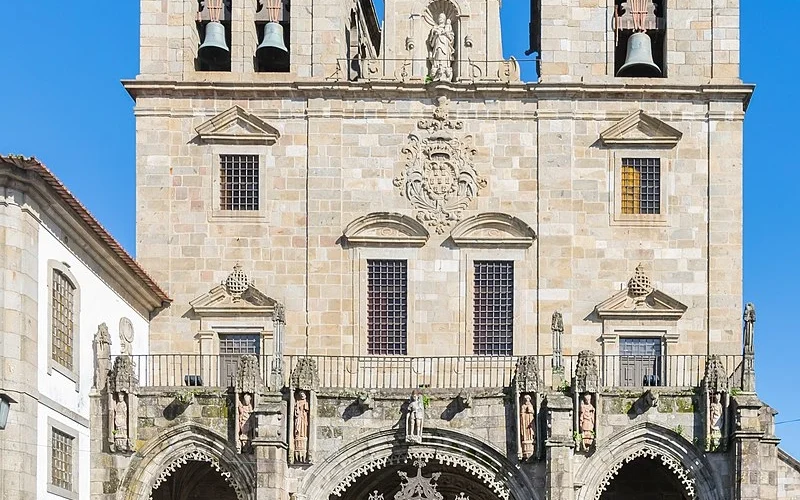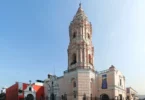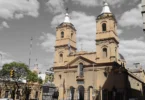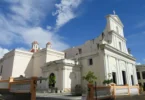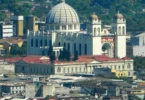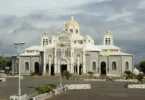Introduction
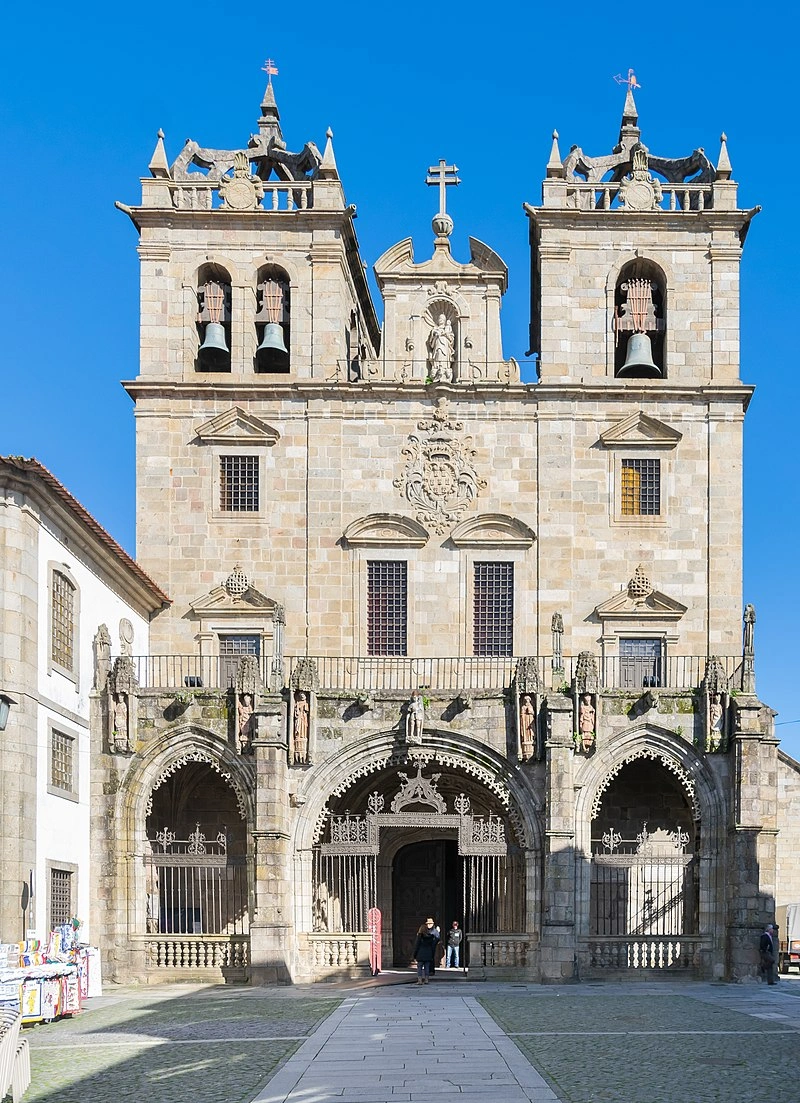
The Cathedral of Braga (Portuguese: Sé de Braga) is one of the most historically significant and artistically important religious buildings in Portugal. Located in the northern city of Braga, it serves as the seat of the Archdiocese of Braga and is the residence of the Primate Archbishop of Portugal and Spain. Due to its long history, architectural grandeur, and cultural importance, the cathedral holds a central place in both the religious and historical landscape of the country. Founded in the 11th century, the Cathedral of Braga has undergone numerous renovations and expansions over the centuries, blending elements of Romanesque, Gothic, Baroque, and Mannerist styles. This eclectic mix of architectural influences makes the cathedral a rich testament to the evolution of religious architecture in Portugal.
In recognition of its historical and cultural significance, the Cathedral of Braga was classified as a National Monument in 1910, ensuring its preservation for future generations. The cathedral not only serves as a place of worship and pilgrimage but also stands as a symbol of the region’s deep-rooted Christian heritage. Visitors to the cathedral are drawn not only by its spiritual importance but also by its remarkable art, including intricate altarpieces, sculptures, and paintings that reflect the artistic achievements of various periods in Portuguese history. As one of the oldest and most revered cathedrals in Portugal, the Cathedral of Braga continues to play a central role in the religious life of the region, while also attracting visitors from around the world who seek to admire its architecture, art, and profound historical significance.
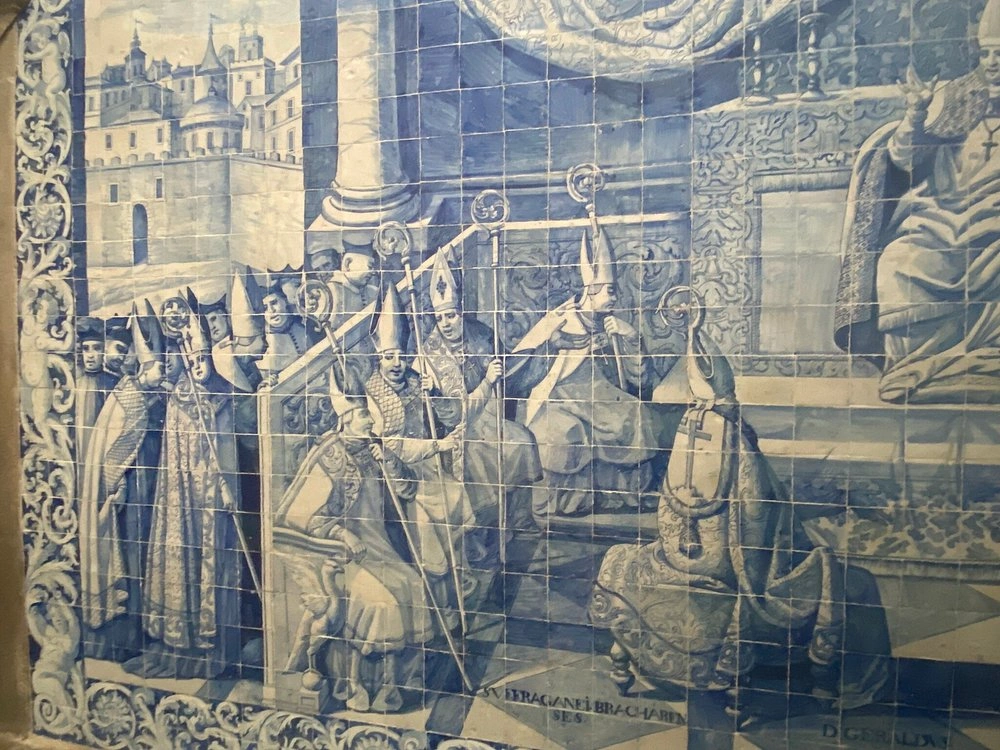
The Diocese of Braga is one of the oldest in the Iberian Peninsula, with its origins dating back to the 3rd century AD. It became the center for the Christianization of Gallaecia (the northwestern region of Iberia), which is modern-day Northern Portugal and parts of Galicia in Spain. The historical significance of Braga as a religious hub has shaped not only the local region but also the broader spiritual landscape of Iberia for centuries.
The Early Christian Foundations and Saint Peter of Rates
Traditionally, Saint Peter of Rates is recognized as the first bishop of Braga, serving from around 45 to 60 AD. According to local legend, Saint Peter was a Jew who had passed away when Saint James the Great visited the region. The Apostle, recognizing Peter’s good nature and intelligence, allegedly resurrected him from the dead and appointed him as the first bishop to spread Christianity in the area. Saint Peter of Rates is said to have been martyred while evangelizing the region, a symbol of the early Christian struggle and perseverance in the face of adversity.
Braga as the Capital of the Suebi Kingdom
As the Roman Empire weakened in the 5th century and Germanic tribes began invading Iberia, the city of Braga (then known as Bracara Augusta) became the capital of the Suebic Kingdom, which lasted from 409 to 584 AD. The conversion of the Suebi people to Catholicism was a pivotal moment in the region’s history, largely due to the efforts of Bishop Martin of Dumio, a prominent religious figure who converted the Suebi around 550 AD. However, Braga’s prominence waned during the Visigothic period, and when the Moors arrived in 716 AD, Braga lost its status as a bishopric and fell under Muslim rule.
Restoration of the Diocese and the Construction of the Cathedral
The bishopric of Braga was restored around 1071 after the Christian reconquest of the city. Bishop Pedro began the construction of the cathedral, which was consecrated in 1089. At the time, only the eastern chapels of the cathedral were completed. This marked the beginning of the cathedral’s long history as a central spiritual and religious institution in the region.
In 1093, Count Henry of Burgundy assumed control of the County of Portugal, and alongside Bishop Geraldo de Moissac, worked to convince Pope Paschal II to elevate Braga to an archbishopric in 1107. This move significantly enhanced the power and influence of the Archdiocese of Braga, as the Archbishop of Braga was granted authority over a vast region that included most of Portugal and parts of Galicia (in present-day Spain). The Cathedral of Braga holds the distinction of being the first Portuguese cathedral, predating the formal establishment of Portugal as a kingdom. It was consecrated and dedicated to the Virgin Mary by Bishop Pedro in a solemn ceremony on August 28, 1089.
Architectural Development: Romanesque to Baroque
Construction of the cathedral continued through the 12th century, with the original structure built in the Burgundian Romanesque style, similar to the Cluny Abbey in France. This architectural style influenced many other churches and monasteries across Portugal during this period. Over time, the cathedral underwent various expansions and modifications. The original Romanesque structure was augmented with Gothic, Moorish, Manueline, and Baroque elements. Key developments included the addition of new chapels and the Gothic-style entrance gallery, along with a Manueline main chapel. Later renovations in the Baroque period added towers, new chapels, and extensive interior decoration, which gave the cathedral its current eclectic style.
Braga’s Influence in Iberian Religious and Political Life
Throughout the Middle Ages, the Cathedral of Braga played a critical role in Iberian religious life. As one of the most important religious sites before the founding of Santiago de Compostela and the Reconquista of Toledo, the cathedral wielded considerable influence in the papal court. The Archbishop of Braga, D. Paio Mendes (1118–1137), is particularly notable for his involvement in the formation of the Kingdom of Portugal. Often considered a key mentor of D. Afonso Henriques, the first King of Portugal, Archbishop Mendes was a staunch defender of the prince’s claim to independence from his mother, D. Teresa of León. He played an instrumental role in securing the Papal Bull Manifestis Probatum from Pope Alexander III, which formally recognized Portugal’s independence from León and solidified the establishment of Portugal as a sovereign kingdom. In 1128, Archbishop Mendes also oversaw the construction of a five-chapel building in the cathedral’s transept, which was later damaged by an earthquake. These additions underscored the continued significance of the cathedral as both a religious and political center.
Legacy of the Cathedral of Braga
The Cathedral of Braga remains one of the most important monuments in Portugal. Its long history, rich architectural evolution, and central role in the development of both the Catholic Church and the Kingdom of Portugal make it a symbol of both spiritual and national identity. The cathedral’s influence in the papal court, its political engagements, and its continued prominence as a religious site highlight its lasting legacy as a cornerstone of Iberian Christianity.
Architecture of Cathedral of St. Mary, Braga, Portugal
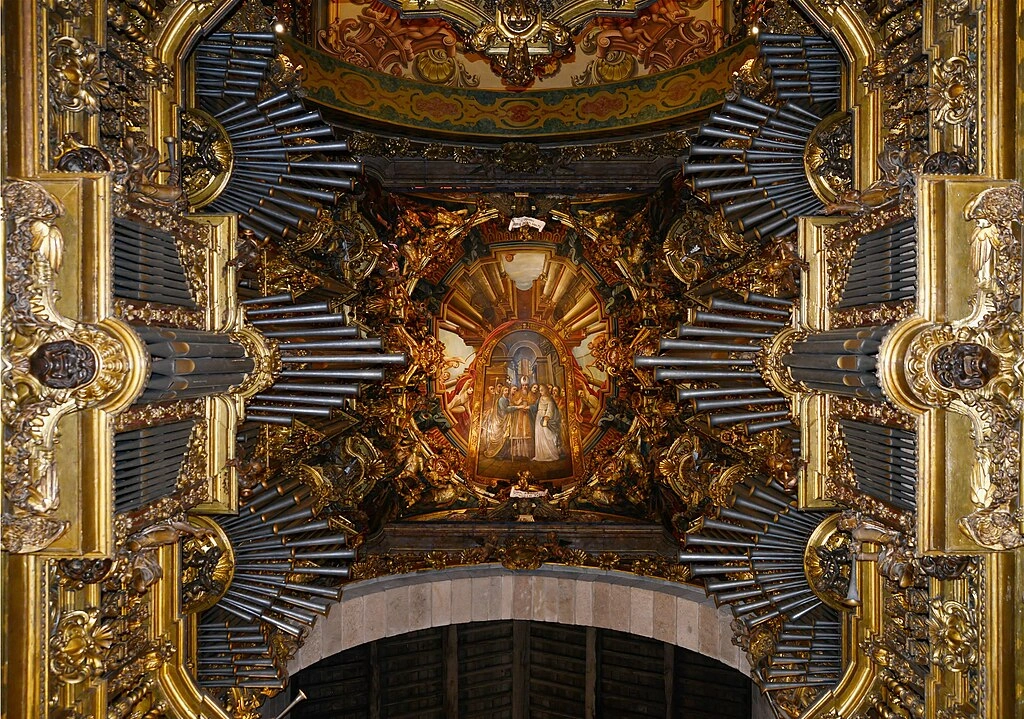
Architects : Juan de Castillo, João Antunes
Architectural styles : Gothic architecture, Baroque architecture, Manueline, Romanesque architecture, Moorish architecture.
The Cathedral of Braga is a masterpiece of religious architecture that blends several styles spanning centuries, from Romanesque to Baroque, with later additions in Manueline and Gothic styles. Its unique architectural and artistic elements reflect the rich history of Braga as a religious center and its role as one of the oldest cathedrals in Portugal.
Exterior Architecture of the Cathedral of Braga
The exterior of the Cathedral of Braga presents a harmonious blend of architectural styles, reflecting the evolution of the building over centuries. It features a mix of Romanesque, Gothic, and Manueline influences, each adding its distinct flavor to the cathedral’s facade.
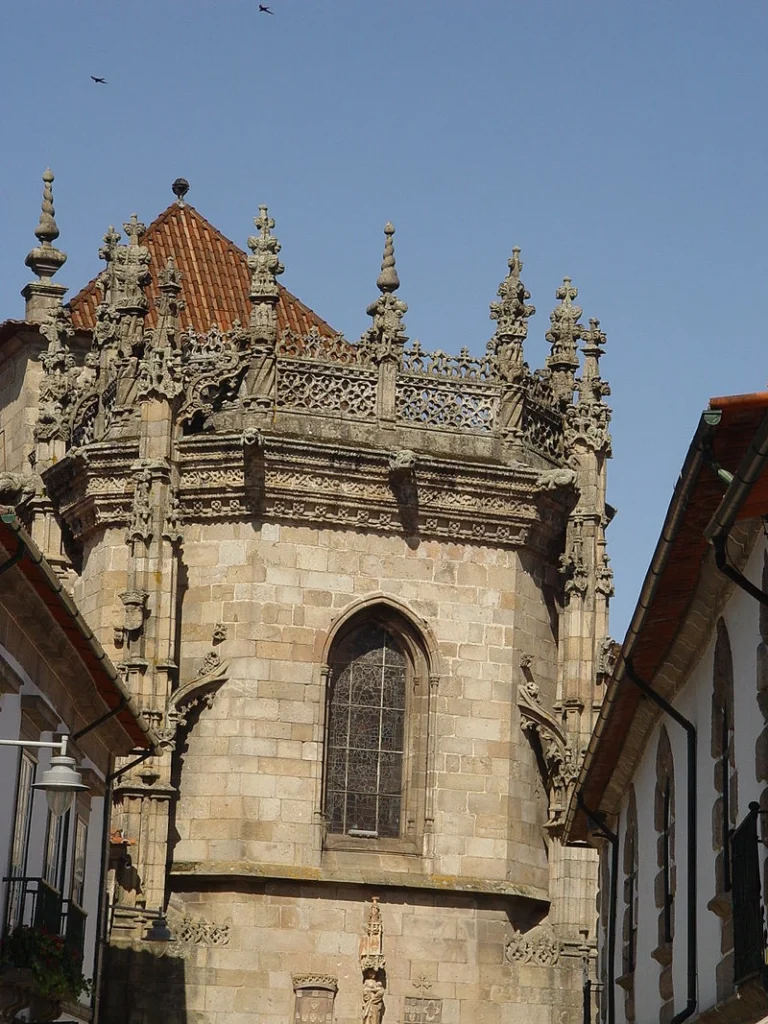
Romanesque Western Facade
The original Romanesque western façade has undergone significant changes over the years, though remnants of the original design still remain. Key features include the archivolts and capitals of the main portal, which are richly decorated with sculpted reliefs. These reliefs depict a variety of animals and human figures, potentially telling moral stories in the vein of the Roman de Renart, a medieval French literary tradition. Notably, one of the archivolts illustrates hens, foxes, and a minstrel, possibly conveying a moral tale meant to educate the viewer.
Late Gothic Entrance Gallery (Galilee)
Between 1486 and 1501, a Late Gothic entrance gallery, known as the Galilee, was added in front of the main portal. This gallery is distinguished by its ribbed vaulting and intricate decorative elements, including statues and gargoyles. Originally designed as functional rain spouts, the gargoyles also serve an aesthetic purpose, contributing to the cathedral’s dramatic exterior. In the 18th century, the Manueline-style metal gate, which was initially located inside the cathedral, was moved to the gallery, further enhancing its visual appeal.
Manueline Modifications
In the early 16th century, Archbishop Diogo de Sousa undertook significant modifications to the Romanesque portal, which involved altering the inner archivolts. The upper section of the facade and the towers were completely remodeled in the 18th century, although these later changes are less significant in terms of architectural importance compared to earlier additions.
Main Chapel
The main chapel, added in 1509, was designed by Basque architect João de Castilho. The chapel’s exterior is adorned with Late Gothic and Manueline tracery, which includes decorative gargoyles and pinnacles. One of the most striking features is a statue of the Madonna breastfeeding Jesus (Madona do Leite), dating from the early 16th century. This beautiful statue is framed by the coat of arms of Portugal on one side and the coat of arms of Archbishop Diogo de Sousa on the other, symbolizing the significant role the archbishop played in the cathedral’s development.
Interior Architecture of the Cathedral of Braga
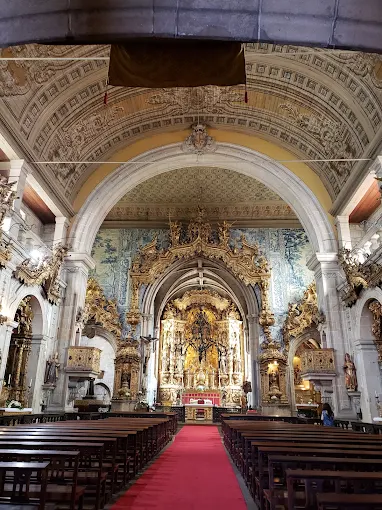
The interior of the Cathedral of Braga presents a captivating blend of Romanesque, Baroque, Manueline, and Neoclassical architectural elements, making it one of the most architecturally diverse religious sites in Portugal.
Romanesque Nave and Transept
The nave of the cathedral retains its Romanesque character, despite modifications made during the 20th century. A reform in the 1900s removed much of the later additions, restoring the sense of grandeur typical of Romanesque architecture. Although many of the original capitals of the columns have been lost, the nave still communicates the cathedral’s early Romanesque origins. The transept and the five Eastern chapels in the apse are also of importance, though none of these chapels have preserved their original Romanesque designs. Over the centuries, these spaces were transformed to reflect new architectural trends.
Baroque High Choir
The Baroque high choir was added near the entrance in the Baroque period and remains one of the cathedral’s most impressive features. The choir is richly decorated with a painted ceiling and gilt wood choir stalls (talha dourada), crafted by Miguel Francisco da Silva around 1737. These stalls represent some of the finest Baroque woodwork in Portugal. In addition to the choir stalls, two gilt wood organs, created by renowned sculptor Marceliano de Araújo in the 1730s, add to the grandeur of the interior. These organs are lavishly adorned with Baroque motifs and are considered key highlights of the cathedral’s artistic and architectural heritage.
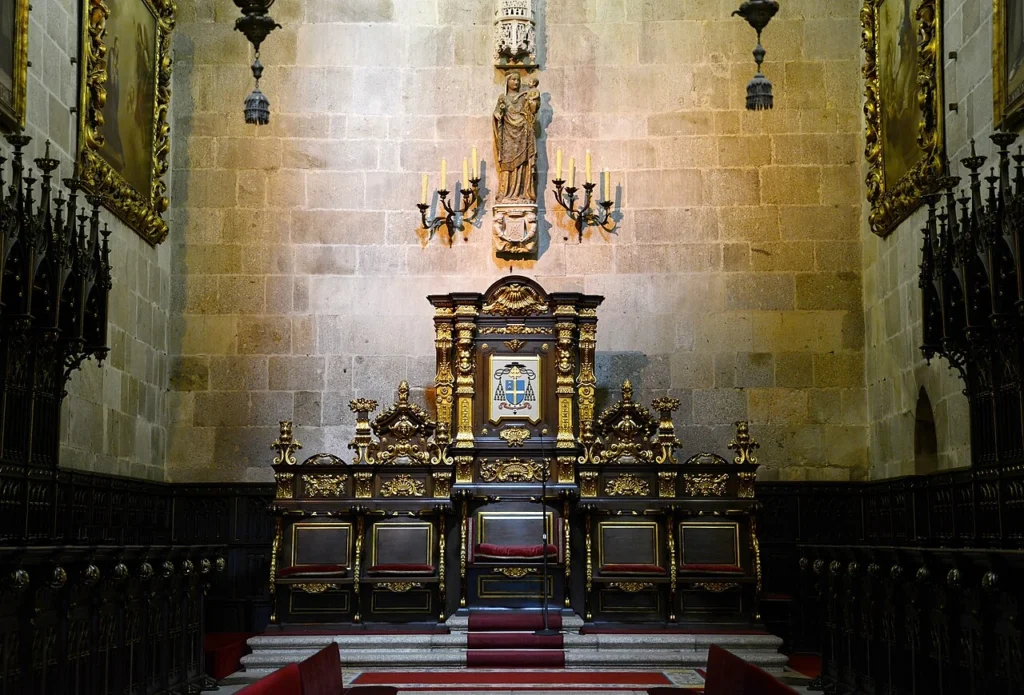
Main Chapel
The main chapel of the cathedral is roofed with stone rib vaulting, and its walls are decorated with a 14th-century statue of the Virgin Mary (Nossa Senhora de Braga). During the early 16th-century remodel, Archbishop Diogo de Sousa commissioned a stone altar, though much of it has been lost over time. The remaining portion of the altar is still in use as the altar table and features beautiful reliefs of Christ and the Apostles. The choir stalls in the main chapel are in the Neo-Gothic style, adding a touch of 19th-century influence to the otherwise ancient space.
Baroque and Neoclassical Chapels
The other chapels within the apse are richly decorated in either Baroque or Neoclassical styles. One of the most notable is the Chapel of Saint Peter of Rates, which is adorned with blue-and-white tiles depicting scenes from the life of Saint Peter. These tiles were painted by António de Oliveira Bernardes, a well-known 18th-century Portuguese tile artist. The intricate tilework is a fine example of the Portuguese tradition of decorative azulejos and adds significant cultural value to the chapel.
Notable Chapels
Chapel of the Kings (Capela dos Reis)
Built around 1374, the Chapel of the Kings houses the tombs of Count Henrique and Countess Teresa, the parents of Portugal’s first king, Afonso I. Originally, their tombs were replaced in the early 16th century with new recumbent effigies, which are still visible in the chapel today. The chapel stands as a testament to the foundational figures of the Portuguese monarchy
Chapel of the Glory (Capela da Glória)
Constructed between 1326 and 1348, the Chapel of the Glory was commissioned by Archbishop Gonçalo Pereira as his burial place. The chapel features a stunning tomb sculpted by Master Pero (an Aragonese artist) and Telo Garcia (a Portuguese sculptor). The tomb is guarded by six stone lions and features a life-size statue of the archbishop. In the early 16th century, the chapel was decorated with Moorish-influenced geometric motifs, giving it a unique appearance that reflects the cultural exchanges of the time.
Chapel of Piety (Capela da Piedade)
The Chapel of Piety, built around 1513 by Archbishop Diogo de Sousa, houses his Renaissance tomb. This chapel, which continues to serve as the final resting place for the archbishop, is a significant example of Renaissance tomb architecture in Portugal.
The Cloisters and Cathedral Museum Treasures
The Cloisters of the Cathedral of Braga, rebuilt in the 19th century, are of limited artistic interest compared to the more celebrated elements of the cathedral’s architecture. However, the Cathedral Museum holds a wealth of significant artifacts that reflect the rich history and artistic heritage of the cathedral. Among the most notable treasures are a Manueline chalice that once belonged to Archbishop Diogo de Sousa from the early 16th century, an exquisite chalice of Saint Gerald dating back to the 10th century, and a beautifully intricate Arab ivory box from the 11th century. These items offer valuable insight into the cathedral’s storied past and the broader cultural influences that shaped its legacy.
Feast Day
Feast Day : 15 August
The Feast Day of the Cathedral of St. Mary (Sé de Braga) is celebrated on August 15, in conjunction with the Feast of the Assumption of the Virgin Mary. This day honors the belief that Mary was taken into heaven, body and soul.
Church Mass Timing
Monday to Saturday : 8:30 AM , 11:30 AM , 5:30 PM
Sunday : 8:30 AM , 11:30 AM , 6:00 PM
Church Opening Time:
Monday to Sunday : 09:30 am – 12:30 pm., 2:30 pm – 5:30 pm.
Contact Info
Address : Cathedral of St. Mary
R. Dom Paio Mendes, 4700-424 Braga, Portugal
Phone : +351 253 263 317
Accommodations
Connectivities
Airway
Cathedral of St. Mary, Braga, Portugal, to Braga Airfield Palmeira, distance between 12 min (7.7 km) via N101.
Railway
Cathedral of St. Mary, Braga, Portugal, to Roman Thermae of Maximinus, distance between 4 min (800.0 m) via R. Dom Frei Caetano Brandão.

